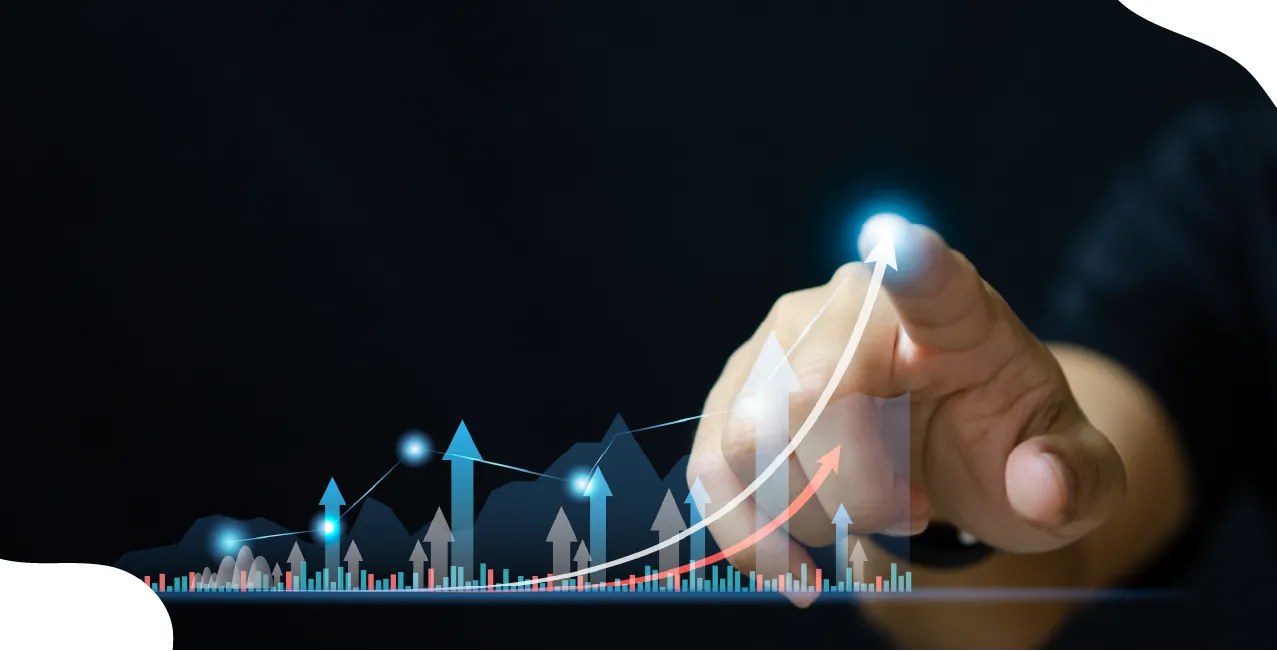
Author
LoansJagat Team
Read Time
5 Min
11 Aug 2025
What is Economic Development? Indicators, Examples & Importance
Economic development refers to the sustained progress in the standard of living, economic health, and prosperity of a region. It includes improvements in infrastructure, education, employment, healthcare, and income levels that contribute to a better quality of life.
Let’s explore this topic with a relatable story. Twenty years ago, Shantipur had only 30% access to clean water and a 40% literacy rate, with the average household earning ₹40,000 annually. Today, access to clean water is at 90%, literacy has risen to 75%, and household incomes have tripled to ₹1,20,000.
This shows how investments in infrastructure, education, and healthcare can significantly improve a community's economic well-being over time. Now, let’s begin our blog.
Meaning of Economic Development
Economic development is the process by which a country or region improves the economic, political, and social well-being of its people. It goes beyond just increasing income; it includes better access to education, health services, clean water, and employment opportunities.
Key Features of Economic Development:
- Inclusive growth across sectors
- Poverty reduction
- Industrial expansion
- Human capital improvement
Example: In 2000, Shantipur had a literacy rate of 48% and by 2020, literacy rose to 82%. Let’s see what were the other changes:
Development in Shantipur (2000 vs 2020)
This table shows how consistent investment in literacy, income, healthcare, and employment transformed Shantipur over two decades.
From basic needs to economic prosperity, Shantipur's progress highlights the tangible impact of long-term development planning.
Key Indicators of Economic Development
Several indicators help track the economic development of a country:
- Gross Domestic Product (GDP): Total economic output.
- Per Capita Income: Average income earned per person.
- Human Development Index (HDI): Composite index of life expectancy, education, and income.
- Poverty Rate: Percentage of the population below the poverty line.
- Employment Rate: Share of the working-age population in jobs.
Read More – What Is Economic Growth? Meaning, Factors & Real-World Examples
Example: Let's look into the rise in per capita income of Country A Between 2010 and 2020:
The consistent rise in income and human development, along with a drop in poverty, signals well-rounded progress, not just economic growth.
Factors Influencing Economic Development
Economic development is influenced by a combination of internal and external factors:
- Infrastructure: Roads, power, and water supply improve productivity.
- Education and Skill Development: Builds human capital.
- Healthcare Access: A healthy workforce drives output.
- Government Policies: Fiscal policies and reforms boost industrial and rural development.
- Technology and Innovation: Drives efficiency and opens new markets.
Example: A rural highway built in 2015 reduced travel time by 60% and increased nearby village trade by 85% over five years.
Let’s look into the Infrastructure Impact on Rural Trade:
Improved travel time and connectivity led to significant growth in rural trade, proving how roads can drive regional prosperity.
Economic Development vs Economic Growth
Though they sound similar, economic development is broader and more qualitative, while economic growth is about increased output.
Development includes quality of life and opportunity, making it a broader, more human-centric approach than growth alone.
Example: Country B's GDP grew by 6% annually for 10 years, but its HDI remained stagnant. Economic development was limited despite high growth.
Importance of Economic Development
Why does it matter?
- Reduces Poverty: Higher incomes and job access.
- Improves Standard of Living: Better access to housing, education, and healthcare.
- Promotes Equality: Balanced growth across regions and communities.
- Increases Global Competitiveness: Strong economies attract investment and trade.
Example: States with high literacy and healthcare access (like Kerala) have stronger development indices even with moderate GDP compared to industrialised states.
Development vs Growth in Two States:
This comparison between an industrial state and a high-literacy state reveals different development paths.
While State X excels in GDP, State Y shows stronger social progress, highlighting the importance of inclusive development.
Barriers to Economic Development
Understanding the challenges that obstruct development helps identify solutions:
- Corruption and Bureaucracy: Delay projects and waste resources.
- Lack of Infrastructure: Limits business expansion.
- Unskilled Labour Force: Affects job creation in high-value sectors.
- Inequality: Skews benefits toward a few, slowing inclusive growth.
- Environmental Degradation: Affects long-term sustainability.
Also Read - What is GDP – Full Form, Types & Economic Importance
Example: A region with poor internet and road connectivity saw just a 2.5% growth in per capita income over 5 years, compared to 6–7% in well-connected areas.
Comparison of Development in Connected vs Remote Regions (2015–2020)
Let’s compare how infrastructure access influences economic development in different regions.
Well-connected regions clearly outperform remote areas, underscoring how digital and physical access drive prosperity.
Conclusion
Economic development is not just about building taller buildings or increasing exports; it’s about lifting people’s lives through opportunity, education, and empowerment. From rural roads boosting trade to health centres lowering mortality, the signs of development are all around us.
It takes policy, planning, and participation to truly develop an economy, not just grow it. And as seen in the story of Shantipur, development begins when people and governments work hand-in-hand for long-term prosperity.
FAQs on Economic Development
Q1. What is inclusive development?
Inclusive development ensures that the benefits of economic success reach all segments of society, particularly marginalised people, lowering inequality and improving social stability.
Q2. What is a good example of economic development?
Building rural hospitals, improving schools, or setting up roads that increase access to trade are examples of real development.
Q3. How is economic development measured?
Common indicators include HDI, per capita income, GDP, poverty rate, literacy, and employment data.
Q4. Can a country have high economic growth but low development?
Yes, if income increases are not equitably distributed or invested in public services, development may lag behind growth.
Q5. Why is human capital important for development?
Educated, skilled, and healthy individuals are essential for innovation, productivity, and long-term sustainable progress.
Other Informative Pages | ||
About the Author

LoansJagat Team
‘Simplify Finance for Everyone.’ This is the common goal of our team, as we try to explain any topic with relatable examples. From personal to business finance, managing EMIs to becoming debt-free, we do extensive research on each and every parameter, so you don’t have to. Scroll up and have a look at what 15+ years of experience in the BFSI sector looks like.

Quick Apply Loan
Subscribe Now


